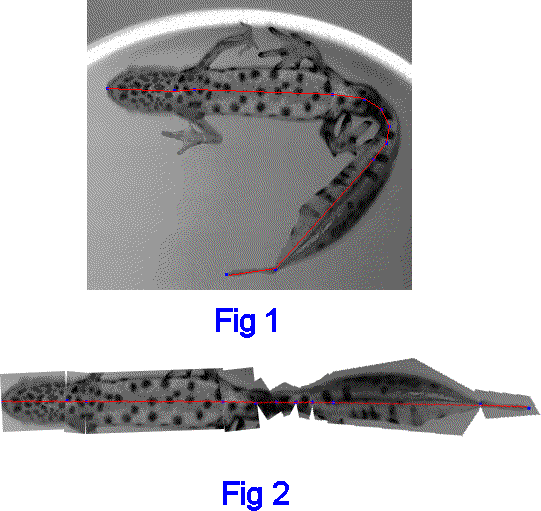i'm NOT sufficiently competent in math so i'd go at it a slightly different way. here's what i'd try:
1) scan your newt (i'd consider a digital camera, though, because the light of the scanner may be too bright and cause reflections/highlights that could ruin the spot pattern. i'll leave that for you to test

).
2) take your image and plot joints where the newt bends. see figure one below. blue dots as bend points.
3) let the computer connect the dots and bring everything into a straight line. ie, calculate the angles and rotate the segments appropriately (your program can do this as you plot the "joints"/bend points). see fig 2. (i did this (quickly) by hand but shouldn't be too terribly hard to program)
4) scale the image to maintain uniformity for later comparisons. ie, all images being compared should be the same width, head to toe, er tail, of the newt. this can compensate for growth, etc, IF it's true that newts simply "scale up" as they grow older. again, your realm of expertise so i'll leave that up to you. if they do, as i suspect, the relative spot positions should stay the same.
5) now have your program plot the spots and save the data. either manually mark the spots yourself with the mouse, or develop a recognition system so the program can do it for you. ie, have it ask you to give 3 reference spots manually (or not), maybe a couple "non-spot" points as well, to give it criteria for recognizing a spot, and let it plot away.

my 2 cents. a recognition system is something i wanted to work on but haven't (much) yet. anyway. this is how i'd go about doing what you need, without the fancy algorithms. keep us posted? (well, atleast me

)
edit thanks to the fancy google ads at the top, it's picked up on the word "algorithm" and given some links to algorithm info if you want to go that route, there's a start.
